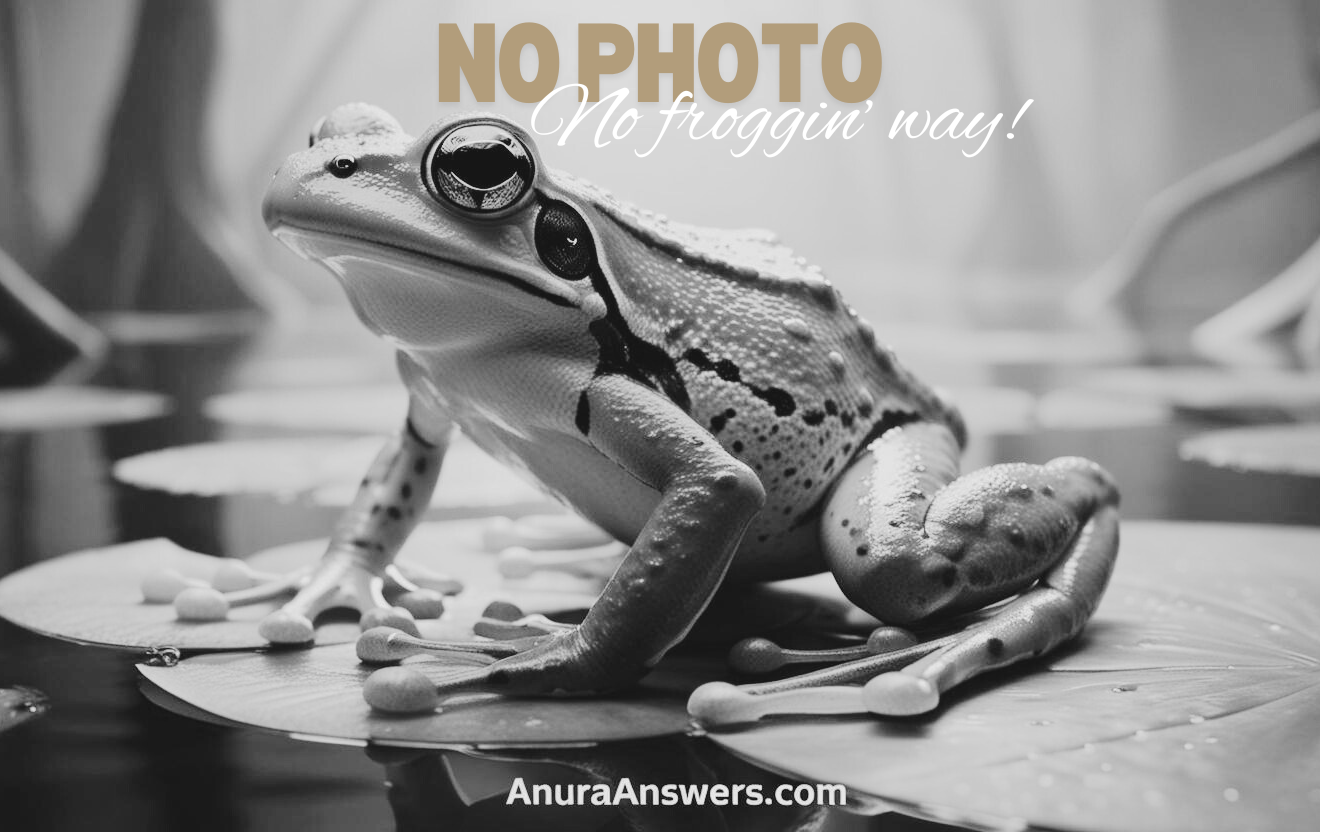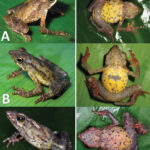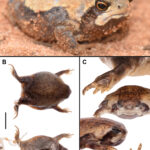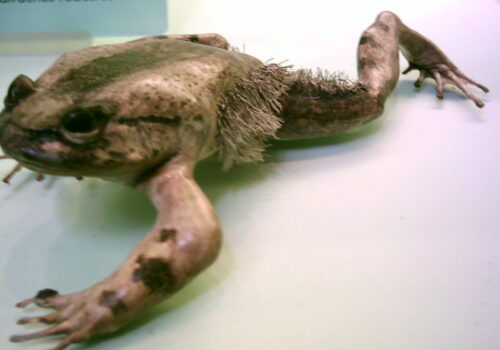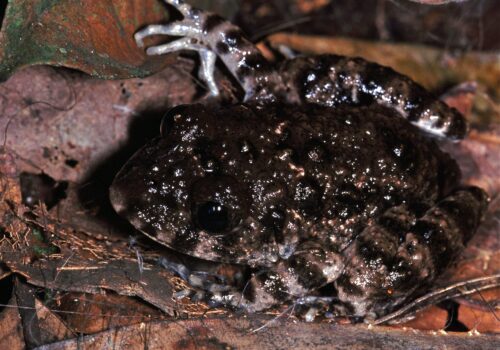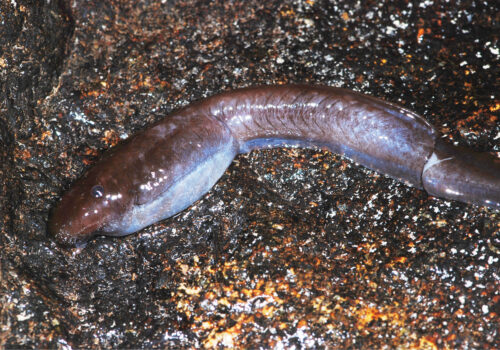Exploring the Hidden Life of Arthroleptis mossoensis: The Frog That Whispers Among Leaves#
The lush forests of East Africa harbor myriad secrets beneath their emerald canopies. Here, amidst the humid understory and gently decaying leaves, lies the subtle and elusive Arthroleptis mossoensis—a frog whose understated elegance and enigmatic presence have long gone unnoticed. Despite being largely overlooked in favor of its more flamboyant amphibian cousins, the story of Arthroleptis mossoensis is one rich with intrigue, ecological importance, and urgent conservation relevance.
Arthroleptis mossoensis, commonly known as the Mosso squeaker frog, thrives in the undergrowth of tropical rainforests across distinct regions of East Africa. So named for its high-pitched vocal calls—akin to delicate, whispered squeaks—the species offers a captivating insight into the delicate web of rainforest life. From its cryptic coloration designed for perfect camouflage to its fascinating reproductive behaviors that defy common frog stereotypes, Arthroleptis mossoensis embodies nature’s persistent innovation and resilience.
In exploring the life and significance of this unassuming amphibian, we’ll journey deep into its habitat, uncover its hidden behaviors, appreciate the interconnected role it plays within its ecosystem, and address the pressing challenges it faces. Through a blend of scientific inquiry, conservation advocacy, and nature storytelling, prepare to discover the remarkable hidden life of Arthroleptis mossoensis—the frog that whispers among leaves.
Taxonomy and Classification#
First described scientifically by Laurent in 1954, Arthroleptis mossoensis is calculatedly classified within the family Arthroleptidae (commonly known as squeaker frogs or leaf-litter frogs). Renowned for their subtle repertoire of chirps, clicks, and squeaks, this family is notably diverse yet often underrepresented in popular conversation.
Within the genus Arthroleptis, species are known for exhibiting direct development—a reproductive strategy wherein froglets emerge directly from eggs, bypassing the tadpole stage altogether. Arthroleptis mossoensis falls distinctly within these fascinating frogs, possessing characteristics that have made its classification clear yet surrounded by questions researchers continue to unravel.
Closely related species include Arthroleptis xenochirus and Arthroleptis schubotzi, both sharing segments of their East African distribution. However, A. mossoensis carves its niche primarily through subtle ecological distinctions and behaviors, a testament to the species’ adaptive capacity and evolutionary refinement.
Natural Habitat#
Imagine a dense patch of rainforest beneath East Africa’s mist-shrouded mountain ranges, where sunlight filters gently through a canopy so thick that the forest floor remains cool, damp, and clothed in a thick quilt of decomposing leaves. Here, nestled beneath fallen foliage and concealed within moss-covered logs, Arthroleptis mossoensis finds its perfect sanctuary.
Geographic Range and Distribution#
Arthroleptis mossoensis is predominantly recorded in the montane and submontane rainforests of Eastern Democratic Republic of the Congo, Burundi, Tanzania, Rwanda, and Uganda. Notably, this frog favors elevations ranging from roughly 900 to 2,400 meters above sea level, revealing its affinity for cooler temperatures, higher moisture, and stable climatic conditions brought by mountain terrain.
Habitat Preferences and Adaptations#
Unlike more aquatic species that gather around ponds and rivers, Arthroleptis mossoensis has adapted specifically to life among leaf litter, humus-rich soils, and shaded woodland floors. Its existence is deeply intertwined with the subtle rhythms of decomposition and renewal that characterize the rainforest ecosystem.
This frog’s cryptic coloration—shades of muted browns, olives, and even reddish-brown hues—ensures near-perfect camouflage against a backdrop of leaf litter and fallen branches. Its flattened body morphology, finely textured skin mimicking dry leaves, and slender, elongated limbs enable effortless movement beneath foliage and the exquisite stealth necessary for hunting.
Physical Characteristics#
To observe Arthroleptis mossoensis up close is to admire evolution’s subtle refinement. Adults, relatively small in size, measure a modest 25–35 mm in length from snout to vent. Their eyes, wide and alert, catch even the faintest reflected light—indicative of nocturnal or crepuscular habits and highly developed night vision.
Peculiar markings and subtle patterns decorate their dorsal surfaces, each individual carrying a unique mosaic of earthy shades blended effortlessly into their habitat. The skin texture, intricately granulated and slightly glandular, contributes to their camouflage not just visually, but by breaking down reflective glare—a critical adaptation for avoiding the keen eyes of predators and prey alike.
Interestingly, Arthroleptis mossoensis demonstrates considerable geographic variation in markings and color intensity, a testament to its adaptability and the localized evolutionary pressures it faces.
Behavior and Life Cycle#
Beneath a tranquil facade lies a life marked by pace and precision—each behavior adapted specifically to the habitat it inhabits. Here, in the perpetual twilight of the forest floor, Arthroleptis mossoensis orchestrates its daily survival.
Feeding and Hunting Strategies#
A carnivorous predator, Arthroleptis mossoensis showcases precision in capturing prey. Its dietary staples include small insects, spiders, mites, ants, and beetles—creatures typically abundant within its microhabitat. Relatively stationary and patient hunters, they ambush prey using stealth and precision. Moving cautiously, often at dusk or nighttime, this species visibly relies on acoustic detection and visual acuity, reacting swiftly to the slightest movement or vibration indicating potential prey.
Breeding and Reproductive Habits#
Perhaps one of the most intriguing aspects distinguishing Arthroleptis mossoensis and its relatives within the genus is their unique reproductive strategy—direct development. Rather than laying eggs in water that hatch into aquatic larvae, female Mosso squeaker frogs deposit small clutches of eggs in concealed, damp locations on land.
Once laid, delicate gelatinous eggs incubate in hidden moist environments—within leaf litter or in carefully selected crevices. Newborn frogs bypass the tadpole stage altogether, emerging already-formed miniature adults. This innovative strategy dramatically simplifies their reproductive cycle, making them less vulnerable to fluctuations in aquatic environments, drought conditions, or predation pressures in water bodies.
Ecological Role#
Although small, Arthroleptis mossoensis holds tremendous ecological significance. Amphibians often serve as critical indicator species, their population dynamics reflecting overall ecosystems’ health and stability. By preying on abundant soil invertebrates, they help maintain balanced arthropod populations, indirectly influencing soil health, decomposition rates, and nutrient cycling.
Simultaneously, as prey themselves, they are vital food sources for diverse predators like snakes, lizards, predatory birds, larger frogs, mammals, and insectivores that share their niche. Therefore, any disruption to their population or habitat can cascade through forest ecosystems, eventually affecting much larger and familiar wildlife species, and even local human communities relying on ecosystem services provided by healthy forests.
Threats and Conservation Status#
Unfortunately, Arthroleptis mossoensis is not exempt from the escalating pressures impacting global amphibian populations. Habitat degradation, deforestation, agricultural expansion, logging activities, destructive mining practices, pollution, and climate change threaten its rainforest habitats more severely than ever before.
While it is currently listed as “Least Concern” by the IUCN Red List due to a relatively large range and presumed stable populations, monitoring remains sparse, and local declines could easily go unnoticed without increased vigilance.
Cultural and Scientific Significance#
Although less famous compared to colorful poison dart frogs or iconic tree frogs, Arthroleptis mossoensis contributes substantially to amphibian biodiversity. It represents localized evolutionary processes and exemplifies survival strategies uniquely adapted to specific forest habitats.
Beyond biology, this species and its kin offer glimpses into broader ecological patterns indicative of healthy forest biodiversity—crucial for climate regulation, soil fertility, groundwater replenishment, and the overall ecological integrity of their territories.
Conclusion#
Arthroleptis mossoensis offers us a powerful glimpse into the hidden nuances of nature, inspiring awe, appreciation, and vital lessons about ecological balance and resilience. Continued conservation, community awareness, and ecological research are essential strategies moving forward.
Through awareness and engagement, we have the power to safeguard these silent, secretive ambassadors of the rainforest. Let this quiet storyteller compel us to action, ensuring it persistently whispers among rainforest leaves for generations to come.
